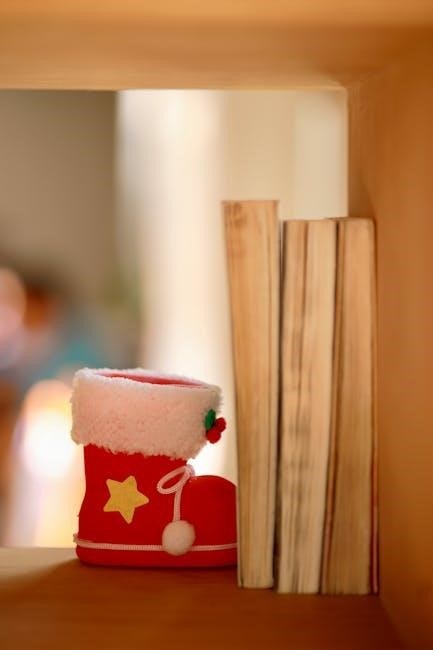Understanding sock sizes is crucial for comfortable footwear, with various sizes available, a guide is necessary to determine the perfect fit for individuals, using foot length as a primary measurement factor always.
Understanding Sock Sizes
To understand sock sizes, it is essential to consider the various factors that influence the fit of a sock, including foot length, width, and the type of shoe being worn.
The sock size guide is typically based on the length of the foot, with different sizes corresponding to different foot lengths.
This measurement is usually taken from the heel to the tip of the longest toe, and it is used to determine the appropriate sock size.
Understanding sock sizes is crucial for ensuring a comfortable fit, as socks that are too small can be restrictive, while socks that are too large can be bulky and uncomfortable.
By considering these factors and using a sock size guide, individuals can determine their ideal sock size and enjoy a more comfortable and supportive fit.
The guide is usually presented in a table or chart format, making it easy to compare foot length to the corresponding sock size, and it is often provided by manufacturers to help consumers make informed purchasing decisions.
Overall, understanding sock sizes is an important aspect of finding the right socks for your needs.
Importance of Correct Sock Size
The importance of correct sock size cannot be overstated, as it plays a crucial role in maintaining foot health and comfort.
Wearing socks that fit properly can help prevent blisters, hotspots, and other foot irritations, while also providing support and stability for the feet.
Correct sock size is also essential for athletic performance, as it can affect the fit and feel of shoes, and ultimately impact overall performance and endurance.
Furthermore, wearing socks that fit well can help regulate foot temperature, preventing excessive sweat and discomfort.
A correct sock size can also improve the overall lifespan of shoes, by reducing wear and tear caused by ill-fitting socks.
By wearing socks that fit correctly, individuals can enjoy a more comfortable and supportive fit, and reduce the risk of foot-related problems.
Overall, the importance of correct sock size should not be overlooked, and individuals should take the time to find the right fit for their needs.
This can be achieved by consulting a sock size guide and trying on different sizes to find the best fit.

Sock Size Charts
Utilizing sock size charts helps determine correct sizes, ensuring comfort and proper fit always with accurate measurements.
Adult Sock Sizes
Adult sock sizes vary from brand to brand, with most brands using a standard sizing system. The sizes are typically based on the length of the foot, rather than the shoe size. This means that a person’s sock size may not necessarily correspond to their shoe size. For example, a person with a shoe size of 10 may wear a sock size of 9-11 or 10-13, depending on the brand and style of the sock. Some brands may also use a sizing system that is based on the circumference of the foot, rather than the length. It is important to check the sizing chart for each brand to ensure the best fit. Adult sock sizes are usually categorized into small, medium, large, and extra-large, with some brands offering additional sizes such as extra-small or extra-extra-large. By considering these factors, adults can find the perfect sock size to match their foot shape and size. Sock size charts can be used to determine the correct size.
Translating Shoe Size to Sock Size
To determine the correct sock size, it is often helpful to translate shoe size to sock size. This can be done using a sizing chart, which typically lists the corresponding sock sizes for each shoe size. For example, a shoe size of 8-10 may correspond to a sock size of 9-11, while a shoe size of 11-13 may correspond to a sock size of 10-13. The translation from shoe size to sock size can vary between brands, so it is important to check the sizing chart for each specific brand. Some brands may also provide a size conversion chart on their website or on the packaging of their socks. By using these resources, individuals can easily translate their shoe size to the corresponding sock size, ensuring a comfortable and proper fit. This translation is a useful tool for finding the right sock size. Sock size charts are available for reference.

Types of Sock Heights
Various sock heights are available, including ankle, quarter crew, and knee-high, each serving a specific purpose and style, offering comfort and versatility always.
Ankle Socks and Quarter Crew Socks
Ankle socks and quarter crew socks are popular choices for their comfort and versatility, with ankle socks sitting just above the ankle bone, making them ideal for low-cut shoes and providing a breathable, minimalistic fit. Quarter crew socks, on the other hand, are slightly higher, covering the ankle and extending a bit above, offering additional support and coverage. These sock heights are suitable for various activities, including athletic pursuits, casual wear, and dressy occasions. The choice between ankle socks and quarter crew socks ultimately depends on personal preference, shoe style, and intended use. Both options provide a comfortable and stylish solution for individuals seeking a reliable and versatile sock option, with various materials, colors, and designs available to suit different tastes and needs, making them a great addition to any wardrobe, with their comfort and practicality being major advantages.
Performance Fit and Sock Height
The performance fit of a sock is closely related to its height, as different activities require specific sock lengths to provide optimal comfort and support. For instance, athletic socks often require a higher sock height to provide additional cushioning and compression, while casual socks may have a lower height for a more relaxed fit. The performance fit of a sock also depends on the material, with moisture-wicking fabrics and breathable meshes enhancing the overall comfort and dryness of the foot. Furthermore, the sock height can affect the fit of the shoe, with taller socks providing a more secure fit and shorter socks allowing for a wider range of motion. By considering the performance fit and sock height, individuals can choose the perfect sock for their specific needs and activities, ensuring a comfortable and enjoyable experience, with the right balance of support and flexibility being essential.

Sock Sizes for Children
Children’s sock sizes vary by age and shoe size, with different ranges for babies, toddlers, and older kids, using foot length as a primary measurement factor always correctly.
Baby Sock Sizes and Toddler Sock Sizes
For newborns up to about 1 year old, baby sock sizes are available, and when in doubt, it is recommended to go bigger, allowing the baby to grow into the socks. Toddler sock sizes are for children between 1 to 4 years old who wear toddler shoe sizes 4 to 7. These sizes are designed to fit comfortably on small feet, providing a snug and cozy fit. The sock sizes for babies and toddlers are usually categorized by age and shoe size, making it easier for parents to find the right fit for their child. By considering the foot length and shoe size, parents can choose the perfect sock size for their baby or toddler, ensuring their little ones stay comfortable and happy. Sock sizes for babies and toddlers are an essential part of their wardrobe, and finding the right size is crucial for their comfort and well-being.
Boys and Girls Sock Sizes
For children between 5 to 10 years old, boys and girls sock sizes are available, catering to kids shoe sizes 8 to 13 and then on up to a size 3. These sock sizes are designed to provide a comfortable fit for growing feet, taking into account the varying shoe sizes and foot lengths. The sock sizes for boys and girls are usually categorized by age and shoe size, making it easier for parents to find the right fit for their child. By considering the foot length and shoe size, parents can choose the perfect sock size for their boy or girl, ensuring they stay comfortable and happy. Sock sizes for boys and girls are an essential part of their wardrobe, and finding the right size is crucial for their comfort and well-being, allowing them to engage in various activities without discomfort or restrictions. Properly fitting socks can make a significant difference in a child’s daily life.
